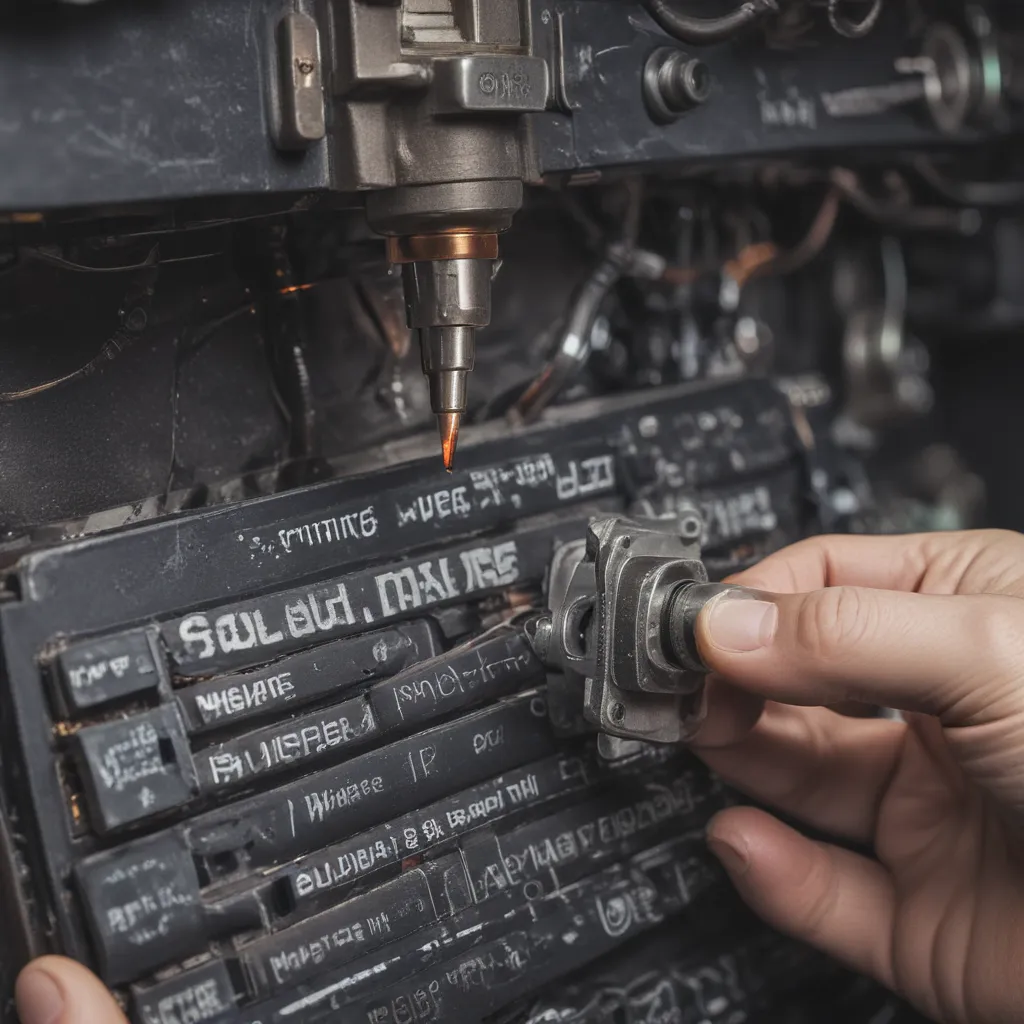
Understanding Misfire Maladies
As the owner of an RV and fleet vehicle repair company in sunny Orange County, California, I’ve seen my fair share of mechanical mishaps. But one issue that always seems to crop up is the dreaded misfire. It’s like a pesky mosquito buzzing around your head – you know it’s there, but trying to swat it away can be a real pain.
Let me tell you, I’ve been there, done that, and have the oil-stained t-shirt to prove it. Diagnosing and repairing misfires can be a tricky business, but fear not – I’m here to walk you through the process step-by-step. Think of me as your automotive Sherlock Holmes, ready to crack the case of the mysterious misfiring engine.
Now, you might be wondering, “What exactly is a misfire, and why is it such a big deal?” Well, my friend, a misfire occurs when one or more of your engine’s cylinders fail to properly ignite the fuel-air mixture, causing a hiccup in the engine’s performance. This can lead to a whole host of problems, from reduced fuel efficiency and power output to increased emissions and even potential damage to your engine components.
Diagnosing the Dilemma
So, how do you know if your vehicle is suffering from a misfire? Well, the symptoms can be as varied as the types of misfires themselves. You might notice that your engine is running rough, with a noticeable vibration or pulsing sensation. Your check engine light might even be glaring at you, like a disappointed parent, begging you to pay attention.
But before you start tinkering under the hood, it’s important to do a little detective work. The first step is to grab your trusty on-board diagnostic (OBD) scanner and see what codes are being thrown. This little gadget is like a crystal ball for your car, revealing the underlying issues that are causing the misfire.
Now, let me tell you, the codes can be a bit of a secret language, like a game of automotive charades. You might see something like “P0301 – Cylinder 1 Misfire Detected” or “P0304 – Cylinder 4 Misfire Detected.” These codes can point you in the right direction, but they’re not the whole story.
That’s where my years of experience come in handy. I’ve seen it all, from faulty spark plugs to dodgy fuel injectors, and I know how to dig deeper to uncover the root cause of the problem. Sometimes, it’s as simple as a loose connection or a worn-out component, but other times, it can be a real puzzle to solve.
Uncovering the Underlying Issues
One of the most common causes of a misfire is a problem with the ignition system. Think of it like the heart of your engine – if the spark plugs aren’t firing properly, it’s going to cause a hiccup in the whole operation. And let me tell you, those spark plugs can be tricky little buggers. Over time, they can become worn, fouled, or even damaged, leading to a misfire.
But ignition issues aren’t the only culprit. Fuel system problems can also cause misfires, like a clogged fuel filter or a malfunctioning fuel injector. Imagine trying to run a marathon with a water balloon in your shoe – it’s just not going to work.
And let’s not forget about the engine’s mechanical components. Things like worn-out piston rings, leaky valves, or a faulty timing chain can all contribute to a misfire. It’s like trying to play a symphony with a broken instrument – the whole thing just falls apart.
Remedying the Misfire
Now, once you’ve identified the root cause of the misfire, it’s time to get to work. Depending on the issue, the solution could be as simple as replacing a spark plug or as complex as overhauling the entire fuel system.
If it’s an ignition problem, you might need to swap out those old, worn-out spark plugs for some shiny new ones. And while you’re at it, don’t forget to check the ignition coils, wires, and any other components that might be causing the trouble.
On the other hand, if the issue is with the fuel system, you might need to clean or replace the fuel filter, or even diagnose and repair a malfunctioning fuel injector. It’s like trying to feed a hungry lion – you need to make sure the food is fresh and flowing properly.
And if the problem is more deep-seated, like a mechanical issue with the engine itself, well, that’s where my expertise really shines. I’ve got the tools, the know-how, and the patience to tackle even the toughest misfire problems, whether it’s a worn-out piston ring or a faulty timing chain.
Preventing Future Misfires
Of course, the best way to deal with a misfire is to prevent it from happening in the first place. That’s why I always recommend that my customers stay on top of their regular maintenance schedule. It’s like going to the dentist – no one enjoys it, but it’s essential for keeping your vehicle in tip-top shape.
Regular tune-ups, oil changes, and inspections can go a long way in catching potential issues before they turn into full-blown misfires. And let me tell you, it’s a lot easier (and cheaper) to replace a spark plug than it is to rebuild an entire engine.
But even the most diligent of drivers can’t always avoid the occasional misfire. That’s why I’m always here to lend a helping hand. Whether it’s a quick fix or a more complex repair, I’ve got the skills and the experience to get your vehicle back on the road, running like a well-oiled machine.
So, if you’re ever in the Orange County area and your engine is sputtering and coughing like an asthmatic steam engine, don’t hesitate to bring it by our shop. I’ll be waiting with my trusty toolbox, ready to solve the mystery of the misfire and get you back on the road in no time.
